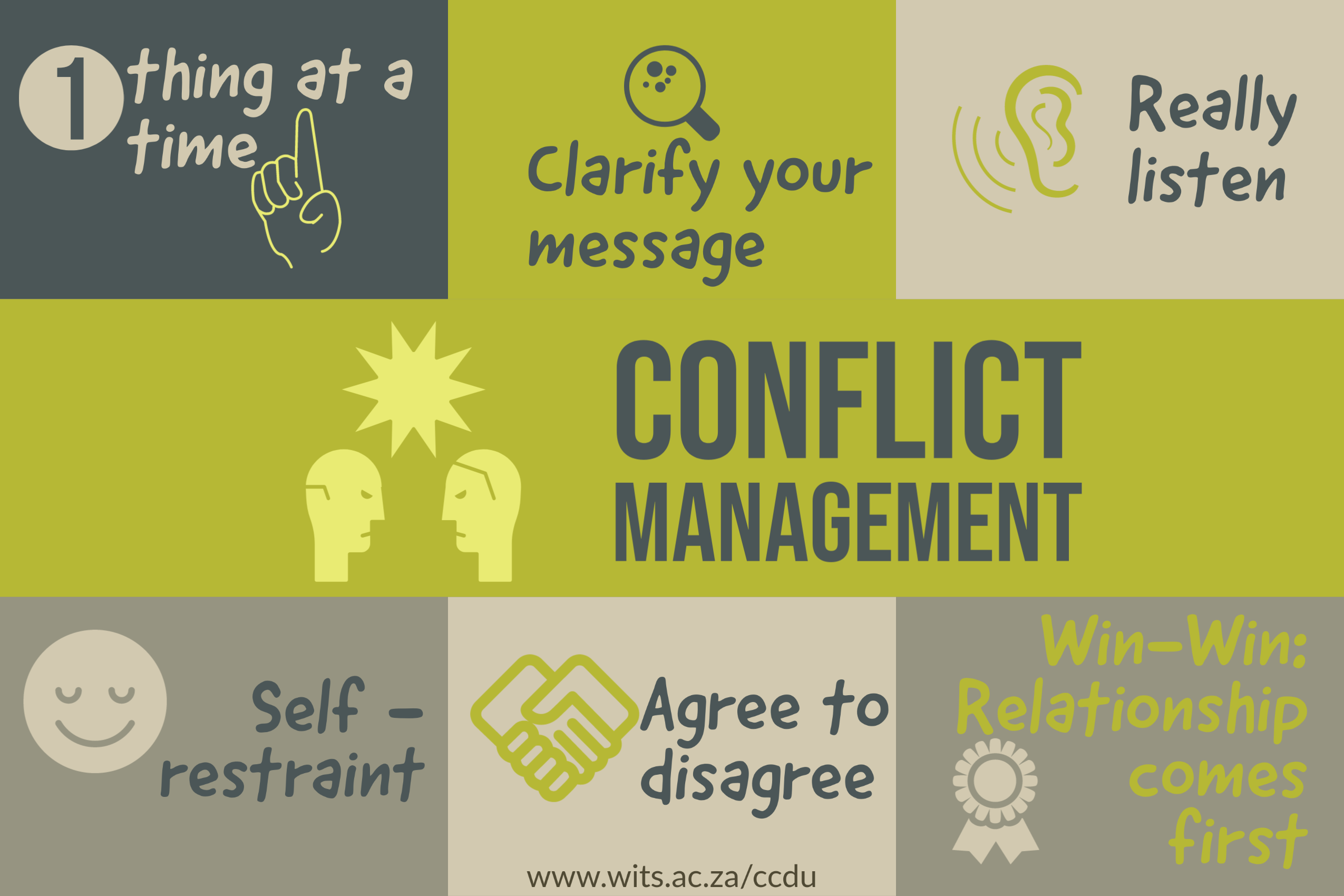Conflict Management

Conflict is a reality of life. It can provide healthy chances for learning and growth, but if we do not know how to deal with it, it can become negative and destroy relationships. Conflict situations differ, so there is no single way of solving all conflicts.
Conflict is:
- A struggle between at least two parties who perceive incompatible goals, resources, and an interference from the other party in achieving their goals.
- The difference in opinion, values and norms that occur within: an individual, between two individuals, within a team of individuals or within an organisation.
Conflict can be both negative and positive
Positive aspects of conflict:
- It allows people to voice their concerns / feelings.
- It can bring about good change.
- It is a survival strategy.
- Conflict can strengthen relationships (learn about others and yourself).
- There is a sense of achievement when conflict is resolved.
Negative aspects of conflict:
- There is a personal attack, blaming or judging.
- It leaves scars (hurts the other emotionally or mentally).
- It can become the only way to communicate one’s needs.


